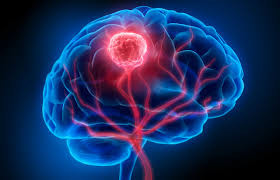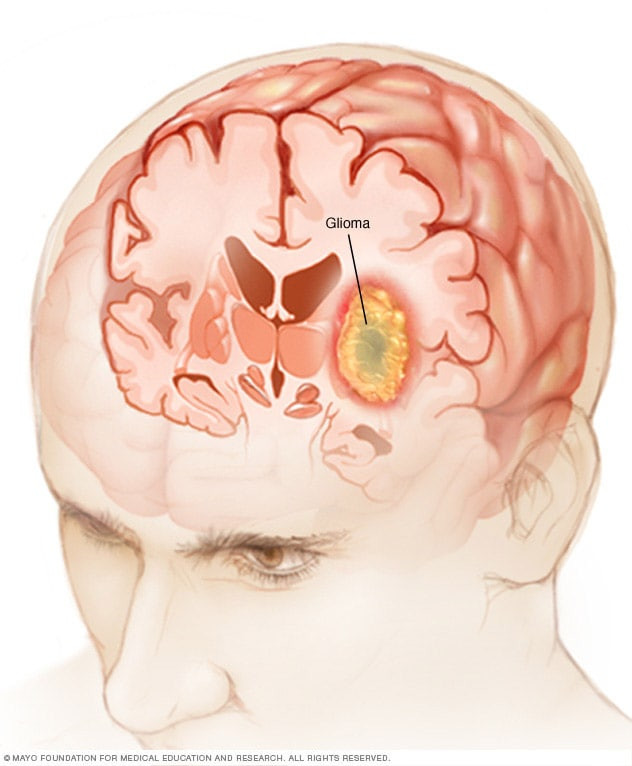Definisi
Neurofibromatosis (NF) adalah kelainan pada serabut saraf yang diturunkan secara genetik/bawaan sejak lahir. Kelainan ini menyebabkan timbulnya tumor pada serabut saraf dan dapat terjadi dimana saja termasuk di dalam otak dan sumsum tulang belakang. Sebagian besar kasus neurofibromatosis bersifat jinak, namun dapat berubah menjadi ganas (malignan).
Kelainan ini terjadi pada 1 dari 3000 kelahiran. Pada 50% kasus mengalami mutasi spontan dan sebagian besar mengalami NF karena mutasi yang diturunkan. Pada kasus NF yang diturunkan dari keluarga, hanya dibutuhkan salah satu dari orang tua yang membawa mutasi gen. Kejadian NF termasuk kejadian yang langka dan usia pertama kali munculnya gejala bervariasi dari saat lahir hingga usia 30 tahun.
Penyebab
Kerusakan atau mutasi pada genetik menyebabkan neurofibromatosis, baik yang diturunkan atau terjadi secara spontan. Mutasi genetik adalah perubahan yang terjadi pada satu atau beberapa titik di dalam genetik. Beberapa mutasi yang diketahui menyebabkan neurofibromatosis adalah:
- NF-1: Mutasi pada kromosom 17. Kromosom 17 mengatur pembentukan zat yang berfungsi untuk mengatur pertumbuhan sel.
- NF-2: Mutasi pada kromosom 22 membentuk protein yang tidak dapat menekan pertumbuhan tumor.
- Schwannomatosis: Gen yang mengalami mutasi pada kelainan ini berfungsi untuk menekan pertumbuhan dari tumor. Pada 85% kasus dari schwannomatosis, mutasi terjadi secara spontan.
Faktor Risiko
Faktor risiko terbesar bagi seseorang untuk mengalami NF adalah keturunan di dalam keluarga. Genetik memiliki peran yang besar dalam NF, dimana 50% dari kasus berasal dari mutasi yang diturunkan di dalam keluarga.
Gejala
Terdapat tiga tipe dari neurofibromatosis, NF-1 merupakan tipe yang lebih sering terjadi dibandingkan dengan kedua tipe lainnya. Sebanyak 96% dari kasus NF merupakan NF tipe 1. Gejala yang timbul dari masing-masing jenis NF:
- NF-1: merupakan tipe tumor yang menyebabkan gejala pada saat kecil, biasanya kelainan dapat terlihat pada kulit dan bentuk tulang. Biasanya ditemukan pada sesaat setelah bayi lahir atau pada usia 10 tahun. Nama lain NF-1 adalah kelainan Recklinghausen atau Von Recklinghausen. Gejala yang dapat timbul adalah:
- Adanya bintik coklat yang datar di kulit (cafe au lait): jika terdapat lebih dari 6 bintik coklat, maka seorang anak kemungkinan besar mengalami NF-1
- Bintik di daerah ketiak atau lipatan badan
- Adanya benjolan kecil di daerah iris mata: daerah iris merupakan daerah mata yang memberikan warna pada mata
- Benjolan di bawah kulit yang lunak, berukuran sebesar kacang polong. Dapat tumbuh di dalam bagian tubuh yang lain
- Deformitas tulang: Keadaan ini disebabkan oleh perkembangan tulang yang tidak normal dan kekurangan mineral
- Tumor di saraf mata
- Kesulitan dalam belajar
- Ukuran kepala yang lebih besar dari rata-rata
- NF-2: Tumor ini dapat menyebabkan gangguan pada pendengaran, adanya bunyi berdenging di telinga hingga kesulitan dalam mempertahankan keseimbangan. Gejala biasanya timbul pada usia remaja dan tumor tumbuh dalam kecepatan yang lambat. Tumor di telinga dapat menyebabkan penekanan pada serabut saraf yang lain sehingga menyebabkan gangguan pada wajah, nyeri kepala hingga kejang.
- Schwannomatosis: merupakan tipe tumor yang paling jarang, biasanya muncul pada usia 25-30 tahun. Tumor muncul pada daerah kepala, sumsum tulang dan serabut saraf lainnya. Gejala yang muncul adalah nyeri yang hilang timbul untuk waktu yang lama (kronis), rasa baal atau kelemahan di beberapa bagian tubuh dan kehilangan massa otot. Hingga saat ini informasi terkait schwannomatosis masih terbatas.
Diagnosis
Dokter akan menanyakan riwayat kesehatan keluarga dan pribadi terlebih dahulu. Kemudian dokter akan melakukan pemeriksaan fisik untuk memastikan gejala dan melihat tingkat keparahan. Untuk didiagnosa NF-1, harus ada minimal dua gejala atau satu gejala dan riwayat NF-1 di dalam keluarga. Jika dokter membutuhkan pemeriksaan tambahan, pemeriksaan yang dapat dilakukan adalah:
- Pemeriksaan mata
- Pemeriksaan fungsi pendengaran dan pemeriksaan keseimbangan
- Pemeriksaan radiologi seperti x-ray, Computed Tomography scan (CT-Scan) dan Magnetic Resonance Imaging (MRI) untuk mendeteksi kelainan tulang dan tumor di tulang belakang atau otak.
- Pemeriksaan genetik, pemeriksaan ini jarang dilakukan. Dapat dilakukan saat bayi masih di dalam kandungan. Pemeriksaan genetik harus selalu dilakukan bersama dengan konseling genetik. Pemeriksaan genetik 95% akurat dalam mendeteksi NF-1 dan 65% akurat untuk NF-2.
Tata Laksana
Beberapa teknik pengobatan yang dapat dilakukan dalam mengatasi gejala dari NF-1 dan NF-2 adalah:
- Tindakan operasi untuk mengangkat tumor, namun hal ini tidak dapat menghentikan pertumbuhan tumor baru.
- Radiasi untuk membunuh sel tumor, contohnya tumor yang ada pada saraf mata.
Terapi untuk komplikasi dari NF, termasuk penggunaan alat untuk menopang tulang belakang yang rusak atau menggunakan alat bantu pendengaran. Bintik coklat tidak membutuhkan terapi karena bersifat jinak. Pemantauan ketat dan jangka panjang dari dokter spesialis saraf dibutuhkan pada orang dengan NF.
Komplikasi
Komplikasi yang timbul dapat berbeda dari setiap jenis NF. Pada NF-1 komplikasi yang dapat timbul adalah:
- Kelainan neurologis atau kelainan pada fungsi saraf, termasuk epilepsi dan penumpukan cairan di dalam otak (hidrosefalus).
- Masalah kosmetik. Bintik coklat (cafe au lait spots) dapat menyebabkan masalah kosmetik, terutama jika terdapat di daerah wajah. Hal ini dapat menyebabkan gangguan kecemasan dan stres emosional.
- Gangguan pada pertumbuhan tulang.
- Gangguan penglihatan disebabkan oleh tumor di daerah serabut saraf mata.
- Perubahan pada hormon. Jika terjadi perubahan tingkat hormon, terutama pada wanita dapat menyebabkan keluhan atau perburukan gejala.
- Gangguan pernafasan disebabkan oleh pertumbuhan tumor yang menganggu saluran pernafasan.
- Kanker. Sebanyak 3-5% kasus NF dapat berubah menjadi kanker. Termasuk kanker di di kelenjar adrenal.
Pada NF-2, komplikasi yang dapat timbul adalah:
- Tuli sebagian atau total
- Kerusakan saraf di wajah
- Gangguan penglihatan
- Tumor jinak pada kulit
- Tumor jinak pada otak, yang membutuhkan operasi berulang
Pada schwannomatosis, nyeri yang timbul dapat menyebabkan seseorang tidak dapat melakukan kegiatan dan membutuhkan penanganan dari dokter spesialis saraf yang memiliki keahlian dalam menangani nyeri.
Pencegahan
Hingga saat ini belum ditemukan cara untuk melakukan pencegahan terhadap mutasi genetik. Tindakan pencegahan berfokus kepada pencegahan timbulnya komplikasi pada penyakit, seperti:
- Kunjungan rutin ke dokter spesialis saraf
- Pemeriksaan penglihatan dan pendengaran yang rutin
- Pada anak-anak, pemantauan dalam kemampuan belajar dan tingkah laku
Terapi dini dapat mencegah kerusakan permanen yang timbul akibat NF.
Kapan Harus ke Dokter?
Gejala gawat darurat berasal dari pertumbuhan tumor, jika Anda mengalami NF dan memiliki salah satu gejala dibawah ini, segera pergi ke fasilitas kesehatan terdekat untuk mendapatkan penanganan medis:
- Gangguan penglihatan yang terjadi tiba-tiba.
- Kelainan saraf yang menunjukkan adanya massa di dalam otak.
- Adanya perubahan bentuk atau timbul rasa nyeri yang menunjukkan pertumbuhan kanker.
- Hipertensi yang berat (dapat menunjukkan adanya tumor pada kelenjar di ginjal).
Mau tahu informasi seputar penyakit lainnya? Cek di sini, ya!
- dr Nadia Opmalina
- About Neurofibromatosis. Genome.gov. (2016).
- Neurofibromatosis Fact Sheet | National Institute of Neurological Disorders and Stroke. Ninds.nih.gov. (2021).
- Neurofibromatosis - Diagnosis and treatment - Mayo Clinic. Mayoclinic.org. (2021).
- Le, C., & Bedocs, P. (2021). Neurofibromatosis. Ncbi.nlm.nih.gov.
- Neurofibromatosis type 1. nhs.uk. (2021).
- Nazario, B. (2021). Neurofibromatosis. WebMD.
- Germanwala, A. (2021). Neurofibromatosis – Symptoms, Diagnosis and Treatments. Aans.org.












